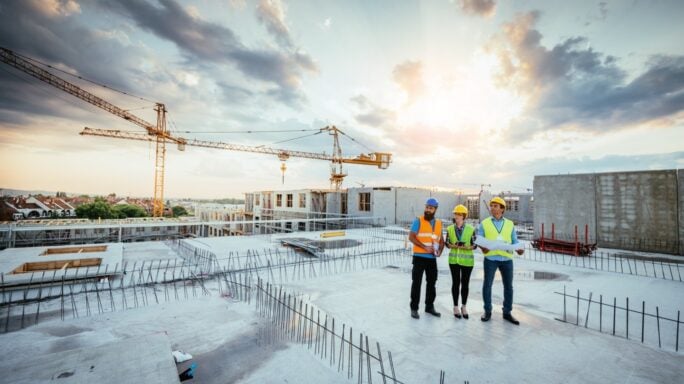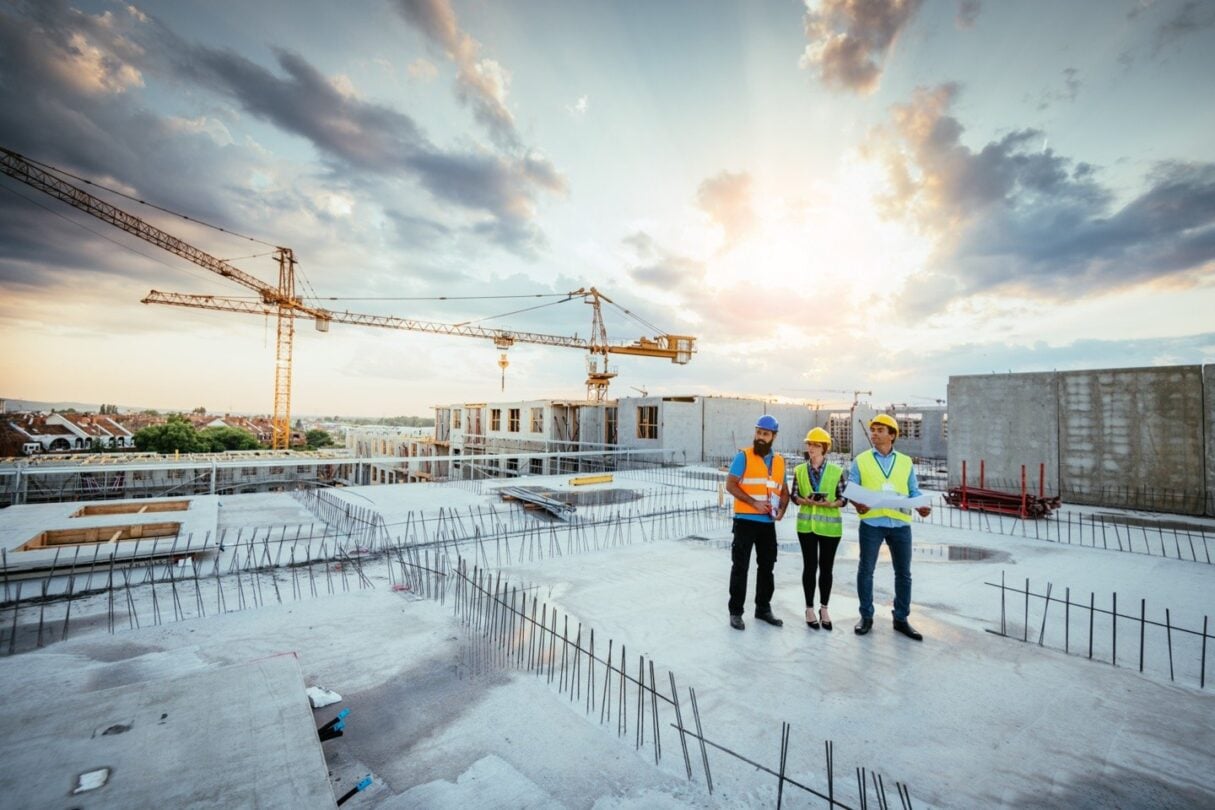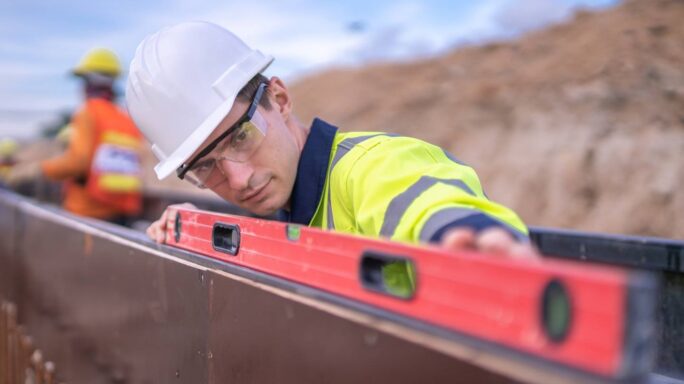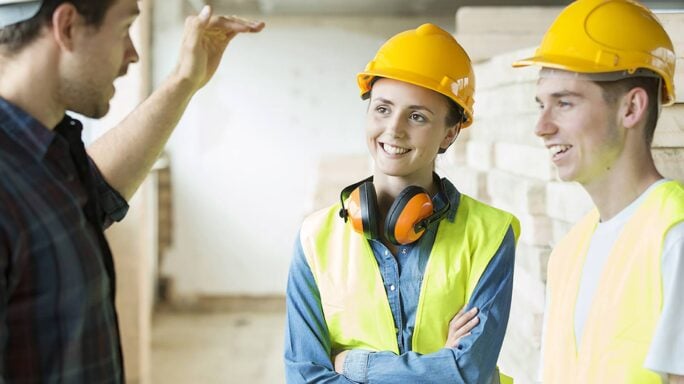Construction
Women in Construction Week: C1S Group CEO Julie Strong on how women can thrive in the industry
In celebration of Women in Construction week, Julie Strong, CEO at C1S Group, shares her experiences in the industry and offers her advice to other women in construction.

Women in Construction Week™ (WIC Week™) celebrates and promotes the role of women in the construction industry.
In its 26th year, WIC Week is being celebrated March 3-9, 2024.
This year’s theme, Keys to the Future, celebrates the strength and knowledge of women and the vital role they play in shaping the future of construction.
Local chapters of The National Association of Women in Construction hold an array of events during WIC Week, which can include everything from presentations to high schools, to job site tours, and luncheons.
While there are more women in the workforce than ever before, and the number of women in construction is increasing, women only make up 10.8% of the construction workforce.
As we celebrate Women in Construction Week, it’s important to take a moment to acknowledge both how far we’ve come and the work that’s yet to be done.
It’s also a great time to recognize the female leaders who fuel this dynamic industry.
The Sage team recently sat down with Julie Strong, CEO at C1S Group based in Dallas, Texas.
C1S is a full-service engineering and construction firm specializing in the design and construction of commercial and manufacturing facilities across the US.
In this article, Julie shares insights about her business and experience in the industry, as well as advice for other women in construction.
How did you come into the construction industry?
Julie: My grandad started TDIndustries, a major mechanical contracting firm, and my dad was the CEO while I was growing up, so I’ve been around the construction industry my whole life.
I started working for TD after college and spent the first 10 years of my career in project management.
Working out in the field gave me a front row seat to how buildings are really built. I learned firsthand how complicated the process is, and how critical it is to have skilled craftspeople and experienced field leadership who know how to plan and execute the work.
There’s a saying in construction that a good superintendent can carry a weak project manager, but a good project manager cannot carry a weak superintendent.
The success of the project is determined by the people in the field. It requires technical expertise, effective communication, and skilled leadership.
I was lucky to work with some of the best folks in the industry who didn’t judge me for being young and not knowing the ins and outs of construction (I’ve got a psychology degree).
Instead, they took the time to teach me. I studied the drawings, asked questions, walked the projects, and trusted my partners.
To this day, those are some of my fondest memories.
I left TD in 2006 and started at C1S when it was an MEP engineering consulting startup. My responsibility was to build financial, operational, and administrative processes to improve efficiency.
Today, I spend most of my time focusing on HR and finance and working with the leadership team to guide the strategic vision for the company.
I still like to walk the projects, and I still marvel and the complexity and beauty of what our teams create.
How has C1S evolved over the years?
Julie: We started as an MEP consulting engineering firm in 2001 focused on cleanrooms and mission critical facilities.
We expanded our consulting services to include commissioning, LEED consulting, and facility assessments.
Around 2007, a key client in the manufacturing space asked us if we’d build what we designed. They needed the entire design and construction process to move more quickly to meet their aggressive production goals.
They wanted a turnkey solution, and we responded by adding construction professionals to our team. Choosing a design-build approach requires a lot of expertise and a lot of trust.
Over the years, we’ve proven that we have both.
C1S Group has been recognized as a great place to work. What sets your company apart?
Julie: That’s easy: Our people.
Every aspect of our service is dependent on our folks bringing their experience, intelligence, and commitment to serve our clients every day.
C1S is a high-trust, high-accountability firm that encourages creativity and teamwork, and we put our people first.
Even though we’re growing—expanding our team, our capabilities and our geographic reach—we want to maintain a sense of family and connection to everyone in the company.
We have 5 core values, and one of them is “work hard, play hard”.
Life’s too short to not enjoy what you do or who you do it with, so we recruit very carefully and we’re intentional about having fun together. We take our work seriously, but we don’t take ourselves too seriously.
I imagine prioritizing your people plays a big role in C1S being recognized by Outside Magazine as one of the top 50 places to work in the US. Could you tell us more about how you help your teams achieve that work life balance?
Julie: We actually call it “life balance” because work is a part of life, and it should be a good part of life.
We know that people don’t forget about their kids or their health while they’re at work; and they don’t forget about their projects when they’re at home.
At C1S, we want to provide a place where the whole person can thrive in all areas of their life.
What I love about my job is that I get to figure out how to make C1S a great place to work, and I get to do it with other leaders who want the same thing.
Obviously, we must provide great benefits and compensation, but we also provide tools and technologies that allow our people to do their job well, with more ease, and less frustration.
For example, we use Sage Intacct Construction integrated with Procore, which are both cloud-based and geared toward the AEC industry.
Since everyone in the company uses these tools to run their projects, we can support each other seamlessly. Our people can go on vacation knowing that all their project information is readily available, and the project won’t miss a beat.
We are serious about taking time off to rest and recharge, and you can’t do that when you’re answering emails or worried about your clients.
Women are underrepresented in both construction and in the C-suite. As a female CEO in construction, what advice do you have for women considering a career in construction or other women looking to advance in the industry?
Julie: I’m really encouraged to see more women choosing careers in construction because I think it will strengthen the industry in a number of meaningful ways.
The traditional approach to construction is changing with the use of improved technologies, the demand for sustainable buildings, and an appetite for more creative, innovative solutions.
The industry needs diverse perspectives, and women’s input is needed to get the best outcome.
Project teams also benefit from a diverse mix of people.
Women tend to lean more heavily on their EQ [emotional quotient/emotional intelligence] and communication skills to solve problems, which is increasingly important as project demands increase while we’re also working more remotely.
For women looking to build a career in the construction industry, you couldn’t ask for a better time to jump in.
There are needs in the field as well as the office, and the glass ceiling has been broken by plenty of women who have come before you.
Be mindful that your best advocate can be male or female. Don’t wait to be asked or invited. If you see an opportunity that interests you, speak up.
Find someone you trust and ask for guidance about how you could get there. If you need some development to prepare yourself, find it and ask for it.
Most importantly, don’t wait until you feel 100% ready for that next step up before you ask for it.
Nobody knows everything, but you probably have a great track record of figuring it out.
Step outside of your comfort zone and ask for it.
And the last thing I’d say is to look at the leadership team of your company. If nobody in leadership looks like you, it’s ok to ask some questions.
If you don’t feel like your organization is earnest about supporting women in leadership roles, it might be time to look for a change.
Final thoughts
A big thanks to Julie for her words of wisdom. We can’t wait to see what she’ll do next and have no doubt she’ll continue to inspire future generations of female leaders.







Ask the author a question or share your advice